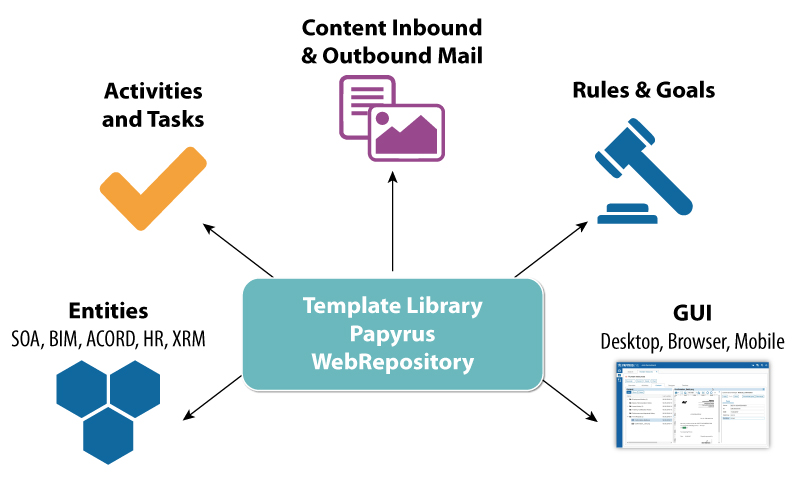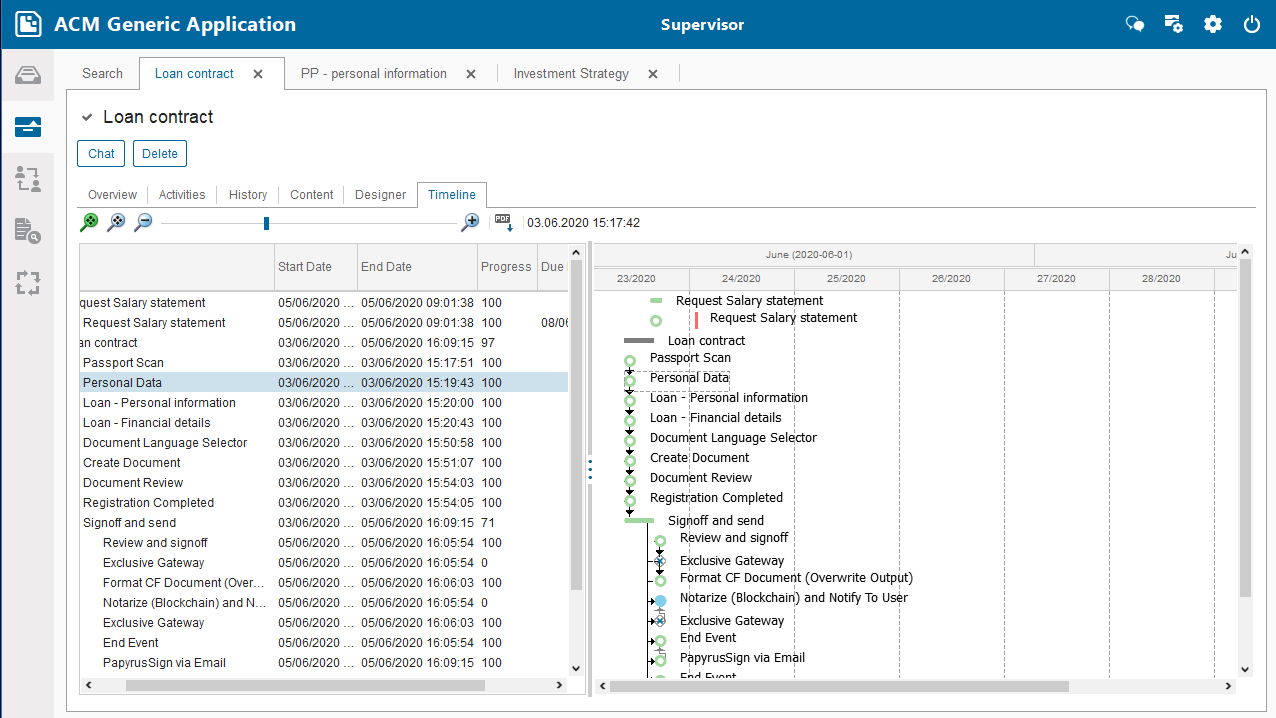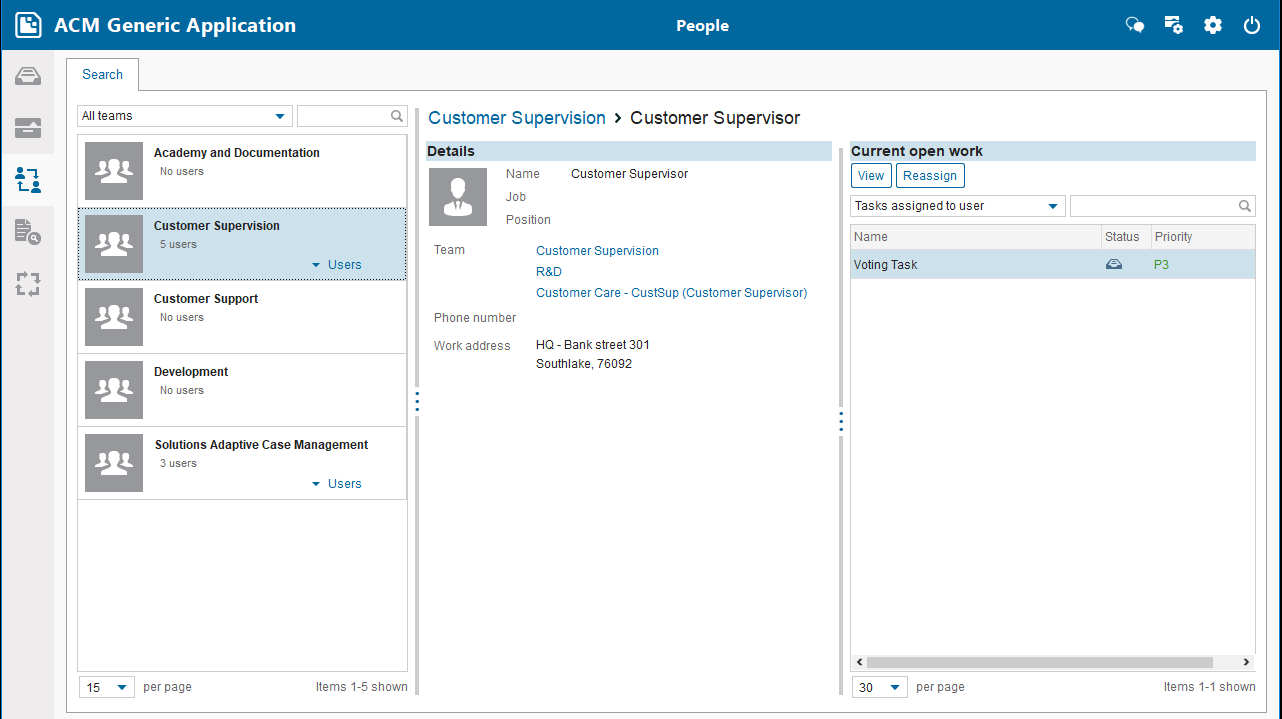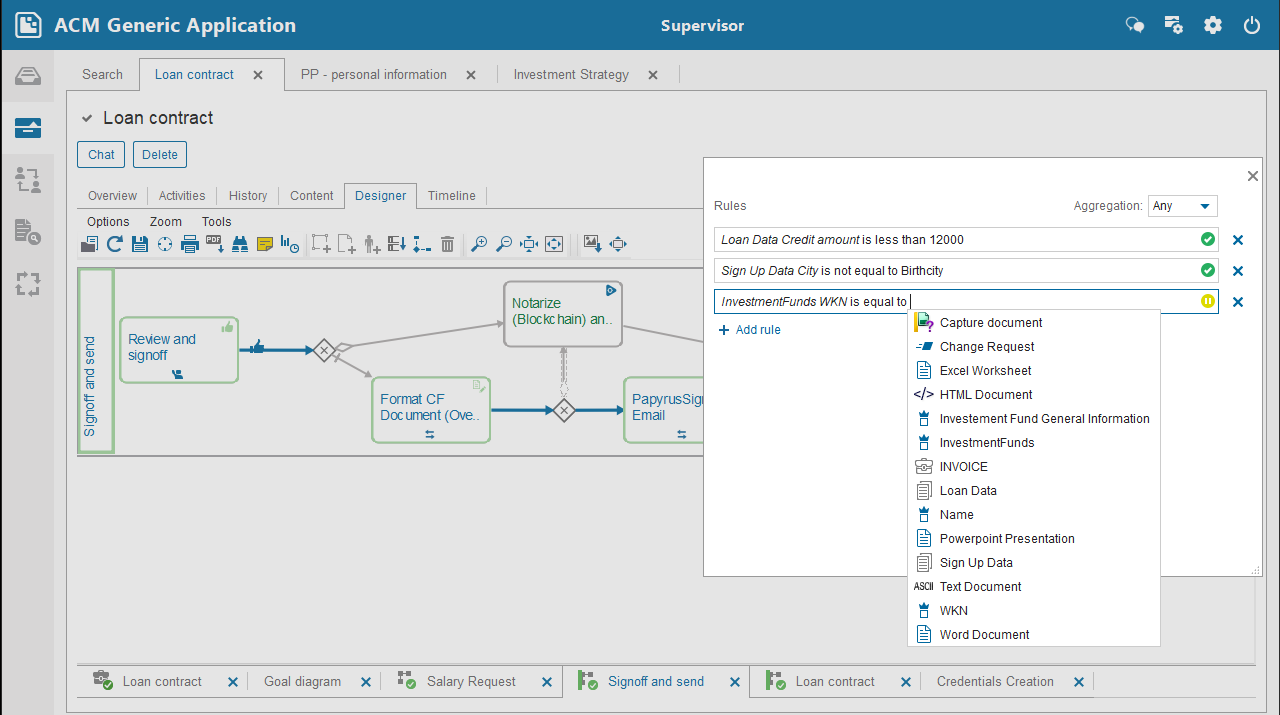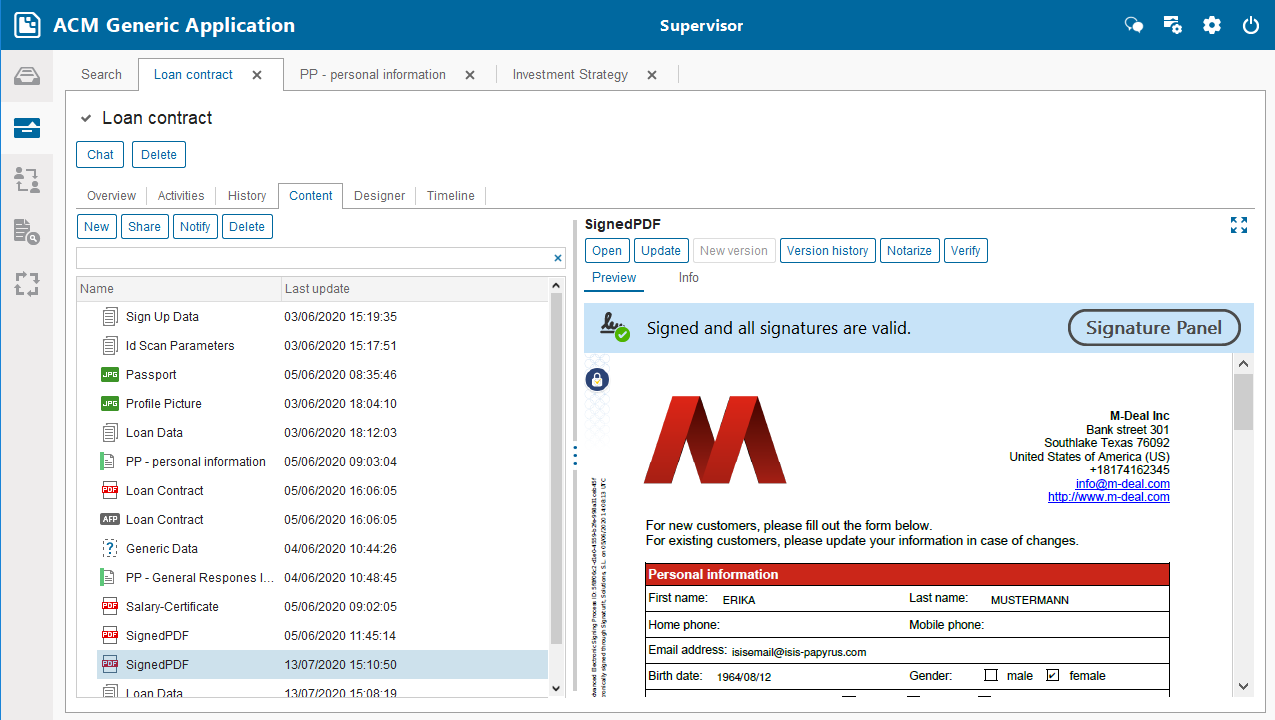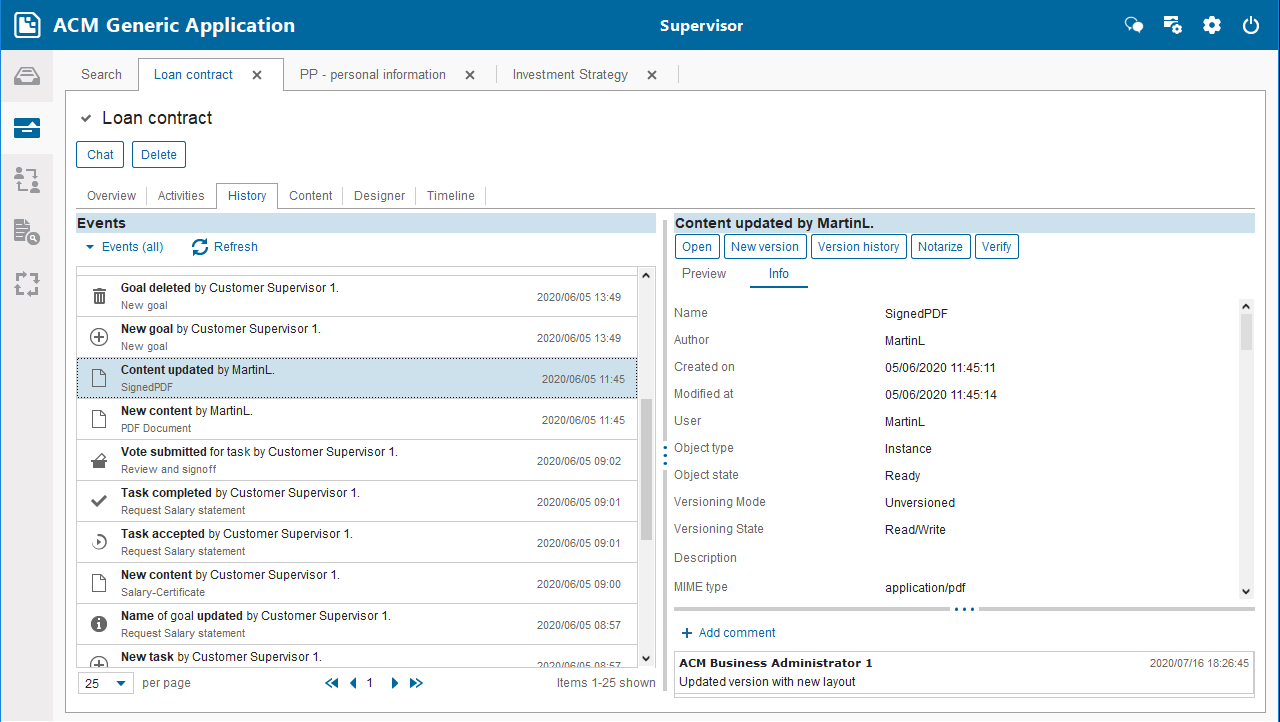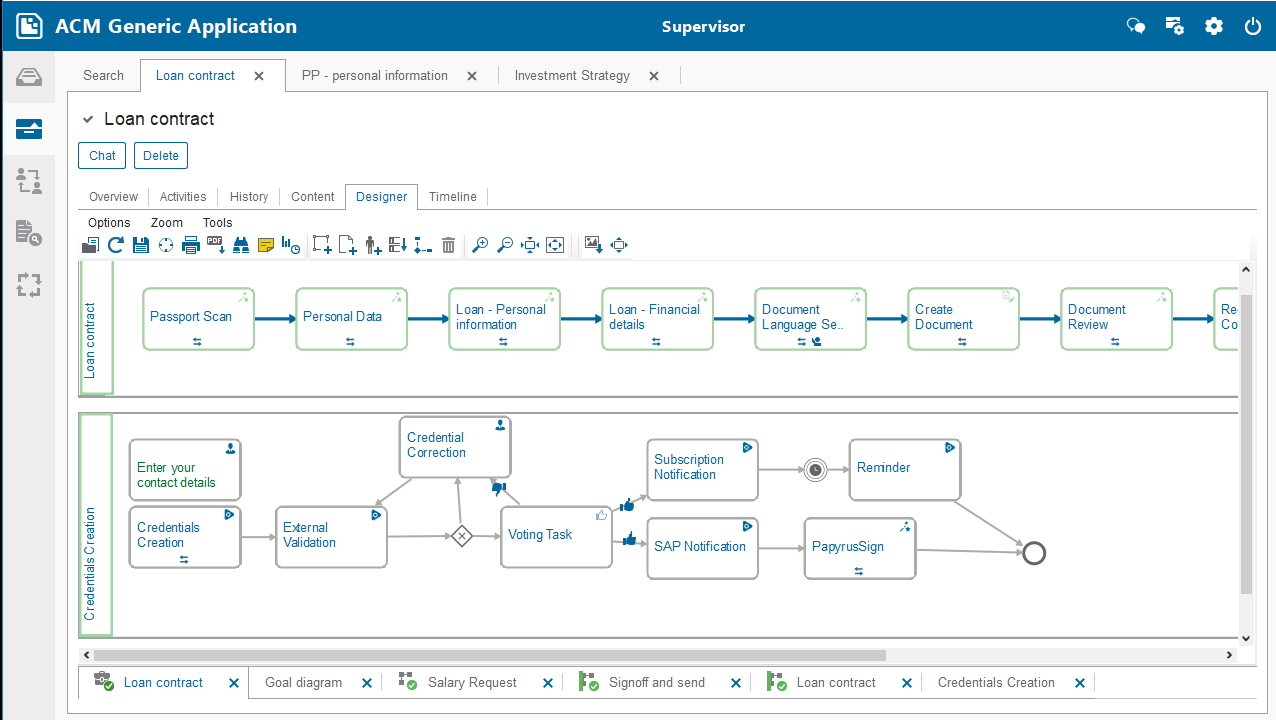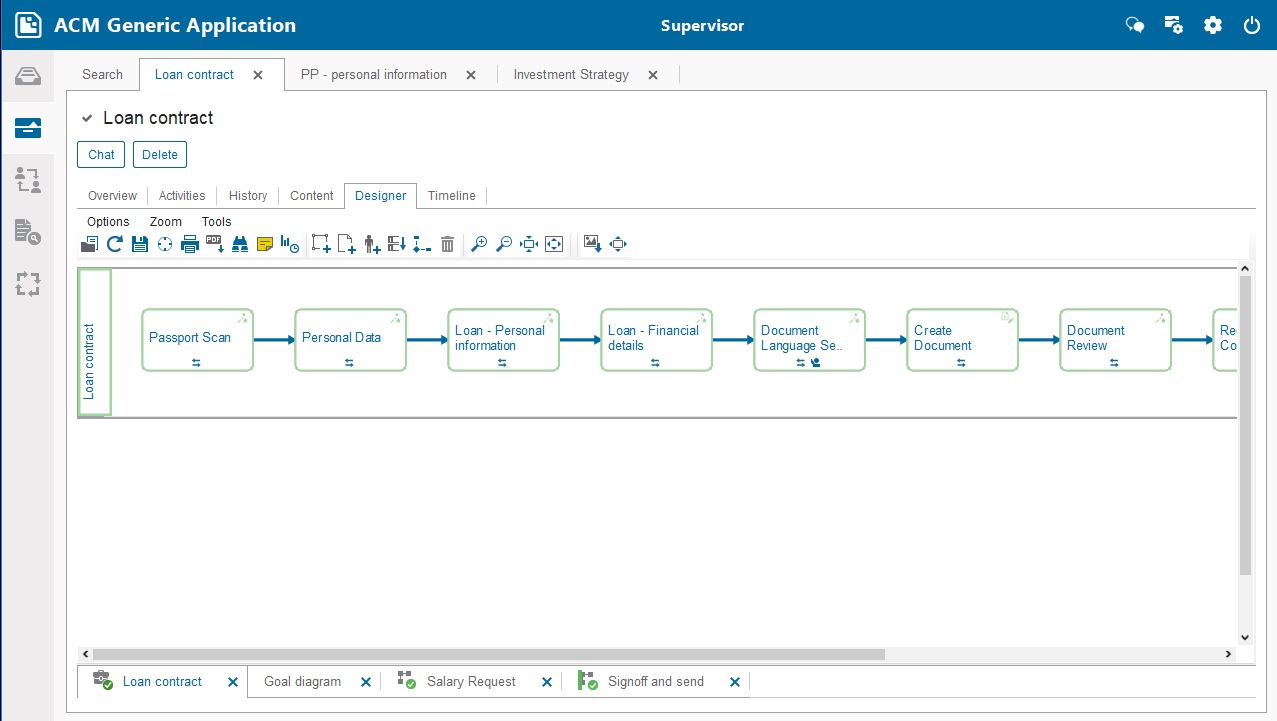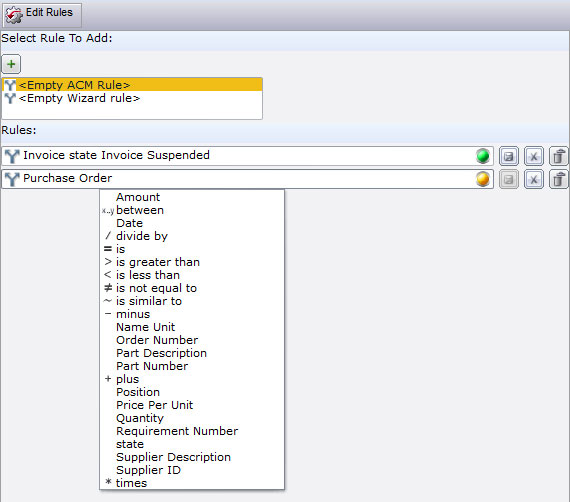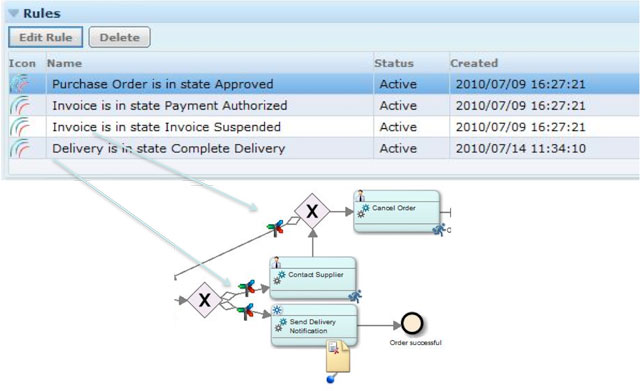Adaptive Process
Papyrus Consolidation of Data, Content, Rules, Goals and Interaction
Papyrus ACM is communication and process in ONE.
Papyrus consolidates the functions of process, content and customer communications management, providing SOA and other interfaces to integrate with ERP and other internal systems and support central project management and deployment for all definitions assets.
Empowering knowledge workers requires adaptive technology to enable business communications and processes using five basic elements:
Entities: SOA and other interfaces connect the silos to the process environment
Goals and goal rules: Direction and measurement ensure results
Content: Inbound and outbound correspondence
Rules: Natural language rule (NLR) editing
GUI: Same across desktop/portal - authorized users define forms and wizards from Widgets
Goal-driven Knowledge Work
Process management is not micro-managing everyday business processes from the boardroom. Empowerment is certainly not decision-making authority for everyone about everything. Empowerment is enabled by transparency. Transparency down-the-line helps knowledge workers to understand the business goals. Transparency up-the-line enables monitoring to verify the efficiency of that activity. If the customer can participate in that up-the-line transparency, then it will be substantially easier to judge his perception of quality. Knowledge work describes fluid business processes that cannot make use of predefined flowcharts and decision points that guide execution. For such unpredictable work, it is often more effective that larger milestone plan and goals, as well as commonly used procedures, begin as part of the initial template or as options available to participants when the evolving situation calls for it.
Goal-oriented, Adaptive Processes
The reality of BPM shows that 'Measure-to-Manage' optimization is counterproductive to improvement and innovation. Only empowered actors can use their intuition and experience for sensible action.
Papyrus recognizes the importance of goal-driven process by incorporating the use of milestones and rules to manage path and control progression, along with sub-goals – reusable sub-processes available in multiple applications and in a balanced scorecard.
- Milestones and rules manage the path and progress
- Business view of BPM enables goal-relevant decision-making
Processes in the Papyrus platform are collaborative activities performed on architecture data models and content. State/event chains of execution are used rather than rigid flowcharts.
Adaptive technology enables model-based process definition and execution. It also collects 'actionable knowledge' based on process patterns created by business users. Actionable knowledge is not merely data, information or descriptive text but also knowing which action will lead from the current situation A to a desired situation B.
With this approach, knowledge workers are enabled by adaptive technology to implement many small, low-cost improvements that follow the business architecture and can be verified for benefits within days.
Design-by-Doing
Adaptive processes only really become processes when the components are assembled at run time by the user. Keith D. Swenson
The team owning the process must be in charge of additions, improvements, and corrections and, therefore, a new adaptive technology is required. End users do not just influence the design, they actually create the process on the fly. Max J. Pucher
The Papyrus WebRepository enables the modeling of data and content entities for business users to assemble processes from application-specific framework libraries. It is not required to create flowcharts, but users can interactively assemble the various elements into a process and iterate in their use until they become more stable and influence the basic standard template.
Goal Achievement
With a consolidated and customizable GUI for monitoring and evaluating case activity and resolution, management can continuously measure against quality parameters for process execution and business goal achievement. Real-time auditing can be performed using boundary rules or by post-verification of archived process tasks.
Agility is not a product feature and it cannot be enforced by methodology. It can only be achieved through the agile mindset of management and employees who will put the right technology in place that empowers people. Process maturity is not about how well processes control employees, but how much process control is given to employees to achieve goals and outcomes.
Papyrus enables the executive to define the goals and outcomes for each process owner. High-level BPMN flowcharts can be used for end-to-end process dependencies instead of step-by-step activities.
Adaptive process technology addresses the needs of business users who perform emergent or unstructured knowledge work - in contrast to repeatable production work. This requires a kind of technological empowerment rather than a new management methodology.
Papyrus Natural Language Rules
Business rules are necessary to ensure that decision-making, action and communication in knowledge work delivers on priorities like accuracy, relevancy, progress and regulatory compliance – and aligns with corporate and departmental policies and goals.
Because they are essential to meeting internal and external standards of performance in case management, business rules must be universally accessible and consistent while also being readily available in the change management cycle - which is often accelerated in knowledge work. Especially in ACM, business users must be able to define and refine activities independent of but linked to back-end application systems.
The Papyrus Platform does not restrict business users in execution but instead guides them by means of case definitions, monitored by business rules and measured by goal fulfillment. Rule entry in Papyrus is a natural language (NL) capability without complex syntax that guides the user and offers both multilingual presentation and editing from a single-rule definition.
NL rules have to be usable in the GUI as normal business user entry for queries also. That means that must be multi-lingual in presentation and editing from a single-rule definition. NL rules must be able to access any data model stored in the central metadata repository.
When a business user fires a rule he just has created, the execution of that rule has to be verified against and secured with the user role/policy setting. When the rules are executed in a different engine the security aspects become very difficult to manage.
Key Values of Papyrus ACM
for the Executive & Knowledge Worker
- Analyze processes via 'Design by Doing' to create processes on the fly
- No restriction in execution – calling web services, human workflow with automated workflow, task execution/letter writing, job management etc.
- Variants or exceptions not required – adapt the process at any moment with goal and sub-goal support
- Embeds all decision-relevant data
- Authorized use and change of real data
- User definition of business rules at run time using the Natural Language Rule Editor
- Add new actors and tasks, as needed
- Actors receive recommendations by the User Trained Agent
- Auditing of alternative decisions by actors
- Goal-driven structure
To empower knowledge workers Papyrus provides:
- Master data models mapped to back-end interfaces
- Management-defined goals and outcomes
- Process adaptability by business users
- Embedded business rules mapped to master data and processes
- Inbound content to be classified, data extracted and validate
- Outbound business content maintained by business users
- User presentation is definable by users per user role
- Embedded security on the object and function levels
